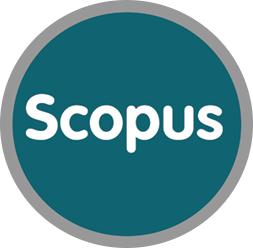Структура та стабільність MnOx-Na2WO4/SiO2 каталізатора окиснювальної конденсації метану
DOI: https://doi.org/10.15407/hftp15.01.130
Анотація
Зразки MnOx-Na2WO4/SiO2 на основі мезопористої кремнеземної матриці були синтезовані з використанням ацетату мангану, вольфрамату натрію, тетраетоксисилану (TEOS) як попередників і броміду цетилтриметиламонію (CTAB), лимонної кислоти та триетаноламіну як пороутворювача, охарактеризовані за допомогою скануючої електронної мікроскопії з енергодисперсійним елементним аналізом (SEM/EDS), рентгенівської дифрактометрії (XRD), електронного магнітного резонансу (EMR), вимірюванням адсорбції-десорбції N2 і випробувані як каталізатор реакції окиснювальної конденсації метану (OCM). Показано, що каталізатор MnNaW/SiO2 складається з фаз Mn2O3, MnO2, Na2WO4 та SiO2. Дані EMR та SEM/EDS свідчать про помітний вплив умов реакції на структуру поверхні та розподіл каталітично активних компонентів у структурі каталізатора. Встановлено значні зміни значень питомої поверхні та об’єму пор зразків зі збільшенням температури та тривалості реакції (значення питомої поверхні та об’єму пор відповідно 116.8 м2/г та 0.590 см3/г – до 46.1 м2/г і 0.232 см3/г після 15 годин роботи каталізатора в реакції ОКМ при 800 °С). Показано, що в умовах реакції ОКМ елементний склад поверхні MnOx- каталізатор Na2WO4/SiO2 змінюється, і ступінь зміни залежить від тривалості реакції OCM. Під впливом реакційної суміші CH4/O2 вміст Mn і W зменшується в перші дві години, причому тенденція до зменшення їхньої кількості на поверхні каталізатора зі збільшенням тривалості реакції ОКМ в цілому зберігається. Детальний рентгенофазовий аналіз також свідчить про зміну фазового складу цього каталізатора під впливом реакційної суміші CH4/O2. Передбачається, що за умов реакції (700–800 °C) каталізатор MnOx-Na2WO4/SiO2 є частинками діоксиду кремнію в основі зі структурою кристаболіту, поверхня яких покрита розплавленим вольфраматом натрію, що містить нанорозмірні частинки структур MnOx, активованих іонами натрію та WOx.
Ключові слова
Посилання
1. Karakaya C., Kee R.J. Progress in the Direct catalytic conversion of methane to fuels and chemicals. Progr. Energy Combust. Sci. 2016. 55: 60. https://doi.org/10.1016/j.pecs.2016.04.003
2. Kondratenko E.V., Peppel T., Seeburg D, Kondratenko V.A., Kalevaru N., Martin A., Wohlrab S. Methane conversion into different hydrocarbons or oxygenates: current status and future perspectives in catalyst development and reactor operation. Catal. Sci. Technol. 2017. 7(2): 366. https://doi.org/10.1039/C6CY01879C
3. Ismailov E.H., Taghiyev D.B., Zulfugarova S.M., Osmanova S.N., Azimova G.R., Thybaut J. Phase Composition and Catalytic Properties of MnNaW/SiO2 Oxide System in Oxidative Conversion of Methane. Theor. Exp. Chem. 2022. 58(1): 61. https://doi.org/10.1007/s11237-022-09723-8
4. https://cordis.europa.eu › project H2020, C123
5. Kiani D., Sourav S., Baltrusaitis J., Wachs I.E. Oxidative Coupling of Methane (OCM) by SiO2-Supported Tungsten Oxide Catalysts Promoted with Mn and Na. ACS Catal. 2019. 9(7): 5912. https://doi.org/10.1021/acscatal.9b01585
6. Werny M.J., Wang Y., Girgsdies F., R. Schlogl R., Trunschke A. Fluctuating Storage of the Active Phase in a Mn‐Na2WO4/SiO2 Catalyst for the Oxidative Coupling of Methane. Angew. Chem. Int. Ed. 2020. 59(35): 14921. https://doi.org/10.1002/anie.202004778
7. Sreekanth Chakradhar R.P, Sivaramaiah G., Lakshmana Rao J., Gopal N.O. EPR and optical investigations of manganese ions in alkali lead tetraborate glasses. Spectrochim. Acta, Part A. 2005. 62(4-5): 761. https://doi.org/10.1016/j.saa.2005.02.045
8. Goldberg D.P., Telser J., Krzystek J., Montalban A.G., Brunel L.C., Barrett A.G.M., Hoffman B.M. EPR spectra from "EPR-silent" species: high-field EPR spectroscopy of manganese(III) porphyrins. J. Am. Chem. Soc. 1997. 119(37): 8722. https://doi.org/10.1021/ja971169o
DOI: https://doi.org/10.15407/hftp15.01.130
Copyright (©) 2024 Sevinj Osmanova, Gunel Azimova, Sima Zulfugarova, Etibar Ismailov, Dilgam Taghiyev, Joris Thybaut


This work is licensed under a Creative Commons Attribution 4.0 International License.



